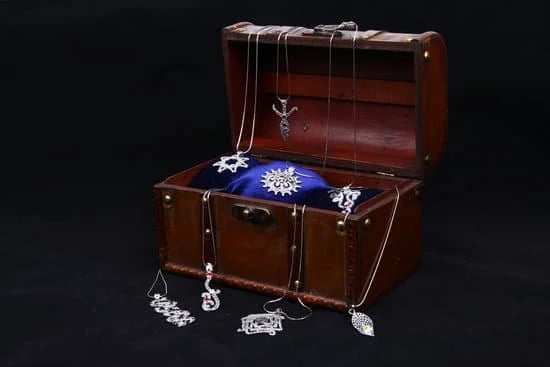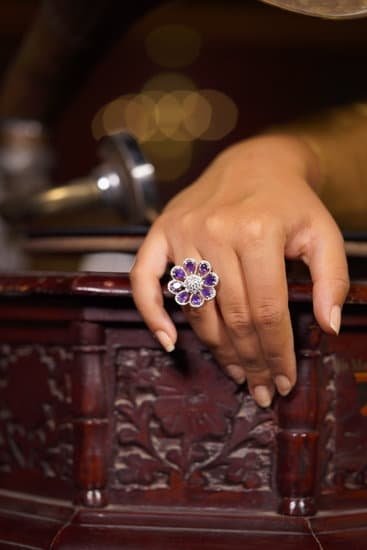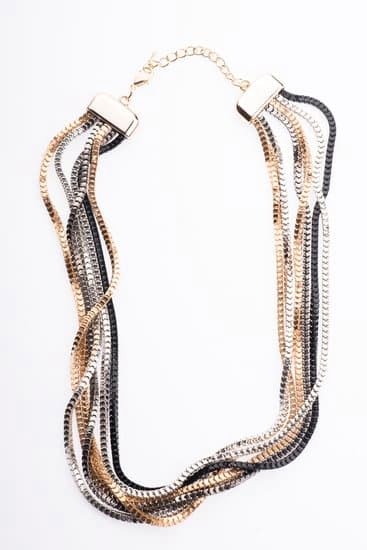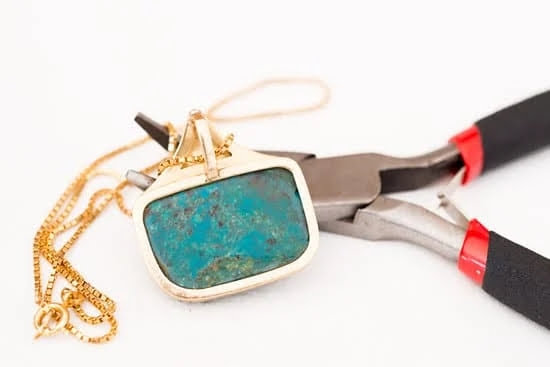Polymer clay jewelry has been gaining popularity in recent years due to its unique beauty and durability. This article will provide you with essential information on how to care for your polymer clay jewelry to ensure its longevity. By following the proper care techniques, you can enjoy your exquisite pieces for years to come.
Polymer clay jewelry stands out for its versatility and artistic possibilities. Unlike traditional materials, such as metals or gemstones, polymer clay can be molded into various shapes and intricate designs. Its vibrant colors and smooth texture make it an attractive choice for jewelry makers and wearers alike.
However, just like any other type of jewelry, proper care is crucial in maintaining the beauty of polymer clay pieces. This is because the material can be sensitive to certain factors that may cause fading, breakage, or discoloration if not handled correctly. By understanding how to care for your polymer clay jewelry, you can ensure that it retains its original charm and lasts a lifetime.
In this article, we will explore the basics of polymer clay, discuss different finishes available, and guide you through cleaning and storing techniques. We will also share tips on preserving the color of your jewelry, preventing breakage or misshaping, dealing with tarnish or discoloration, repairing minor damages, and offering long-term care advice. Let’s delve into the world of caring for polymer clay jewelry so that you can continue wearing your cherished pieces with pride.
Understanding the Basics of Polymer Clay
Polymer clay is a versatile and popular material used in jewelry making. Understanding the basics of polymer clay will not only help you appreciate its unique properties but also enhance your ability to care for your polymer clay jewelry properly.
Polymer clay is a type of modeling clay that is made from polyvinyl chloride (PVC) particles suspended in a plasticizer. It is different from other materials used in jewelry making, such as metal or gemstones, because it can be molded and shaped easily without the need for high heat or specialized tools. Polymer clay comes in various colors and can even be mixed to create custom shades.
There are several benefits to using polymer clay for jewelry making. First, it is lightweight, making it comfortable to wear for longer periods without feeling weighed down. Second, polymer clay is durable and resistant to breaking or chipping, which ensures that your pieces will last for years with proper care. Lastly, polymer clay is versatile and allows for endless creative possibilities. It can be shaped into intricate designs and textures, making each piece unique and personalized.
Taking the time to understand the basics of polymer clay will enable you to better appreciate its beauty and uniqueness. Additionally, being aware of its properties will guide you in taking proper care of your polymer clay jewelry to ensure its longevity.
| Benefits of Polymer Clay |
|---|
| Lightweight |
| Durable |
| Versatile |
Choosing the Right Finish for Your Polymer Clay Jewelry
When it comes to polymer clay jewelry, choosing the right finish is essential for not only enhancing its appearance but also protecting it from wear and tear. There are various types of finishes available, each with its own unique properties and benefits. Here are some factors to consider in selecting the best finish for your pieces:
- Glossy Finishes: If you want a high-shine and reflective surface on your polymer clay jewelry, glossy finishes are a great option. These finishes create a smooth and glass-like appearance, making your pieces look more polished and professional. They also provide an added layer of protection, preventing scratches and minimizing color fading.
- Matte Finishes: For a more subtle and understated look, matte finishes are popular among polymer clay jewelry makers. These finishes give your pieces a soft, velvety appearance without any shine or reflection. Matte finishes can be especially appealing for certain designs that require a more muted aesthetic.
- Satin Finishes: A satin finish is somewhere between glossy and matte, offering a subtle sheen without being overly shiny. This type of finish provides a sophisticated look to your polymer clay jewelry while still maintaining its natural texture and visual appeal.
- Specialty Finishes: In addition to the traditional glossy, matte, and satin finishes, there are also specialty finishes available for those who want to experiment with different effects on their polymer clay jewelry. Some examples include metallic finishes for adding shimmer or sparkles to your pieces, as well as textured or antiquing finishes for creating unique and artistic designs.
It’s important to keep in mind that different brands of finishes may have slightly different properties and application techniques, so always refer to the manufacturer’s instructions before using them on your polymer clay jewelry. Additionally, consider the desired final look of your piece when choosing a finish – whether you want it to be smooth and shiny or have a more natural texture.
By carefully selecting the right finish for your polymer clay jewelry, you can ensure that your pieces not only look beautiful but also maintain their quality and longevity over time.
Cleaning and Storing Your Polymer Clay Jewelry
Proper care and maintenance are essential for preserving the beauty and longevity of your polymer clay jewelry. To ensure that your pieces retain their shine and vibrant colors, it is important to clean them regularly and store them correctly when not in use.
When it comes to cleaning your polymer clay jewelry, a gentle approach is key to avoiding damage. Start by removing any dust or dirt from the surface using a soft cloth or brush. Avoid using harsh chemicals or abrasive cleaners, as these can cause discoloration or scratching.
Instead, you can use mild soap and water to clean your jewelry. Gently scrub the piece with a soft cloth dampened with soapy water, then rinse thoroughly and pat dry with a clean cloth.
In terms of storage, taking proper precautions can help prevent scratches, breakage, and fading. It is recommended to store your polymer clay jewelry in a cool, dry place away from direct sunlight or extreme temperatures.
Avoid tossing all your pieces together in one box or drawer, as they may rub against each other and get scratched. Instead, individually wrap each piece in tissue paper or a soft fabric pouch before storing them in separate compartments of a jewelry box or organizer.
By following these cleaning and storage guidelines, you can keep your polymer clay jewelry looking like new for years to come. Regular maintenance not only enhances the longevity of your pieces but also maintains their stunning appearance. In the next section, we will discuss how to prevent color fading on polymer clay jewelry and protect it from harmful factors such as sunlight and chemicals.
Maintaining the Color of Your Polymer Clay Jewelry
When it comes to polymer clay jewelry, maintaining its vibrant color is essential for preserving its beauty. Over time, exposure to sunlight, harsh chemicals, and improper care can cause the colors to fade. Fortunately, there are several tips and tricks you can follow to prevent color fading and keep your polymer clay jewelry looking as good as new.
- Avoid Direct Sunlight: One of the most common causes of color fading in polymer clay jewelry is prolonged exposure to direct sunlight. UV rays can gradually bleach the colors, resulting in a dull and faded appearance. To protect your jewelry, it is advisable to store it in a cool and dark place when not in use.
- Use Protective Coatings: Applying a protective coating on your polymer clay jewelry can help shield it from external factors that may cause color fading. There are various options available such as varnishes, sealants, and wax finishes. Choose a coating that is compatible with polymer clay and apply it according to the manufacturer’s instructions for optimal protection.
- Avoid Harsh Chemicals: Harsh chemicals present in cleaning products or personal care items can have detrimental effects on the color of your polymer clay jewelry. When wearing your pieces, make sure to avoid contact with substances such as perfumes, lotions, hairsprays, and cleaning agents. These chemicals can cause discoloration or even permanently alter the colors.
- Store Properly: Proper storage plays a crucial role in preventing color fading. Keep your polymer clay jewelry away from humidity and extreme temperature fluctuations as they can lead to color changes over time. A good practice is to store each piece separately in soft pouches or compartments to avoid scratching or tarnishing.
By following these simple steps, you can ensure that your polymer clay jewelry retains its vibrant colors for years to come. Remember that prevention is key when it comes to maintaining the longevity of your pieces. With proper care and attention, you can continue to enjoy your polymer clay jewelry’s beautiful hues and patterns.
Preventing Breakage and Misshaping of Polymer Clay Jewelry
Strategies to Avoid Accidental Bending, Breaking, or Deformation of Your Pieces
Polymer clay jewelry is known for its durability, but it can still be susceptible to breakage or misshaping if not handled properly. Taking some preventive measures can go a long way in ensuring the longevity of your beloved pieces. Here are some strategies to help you prevent accidental bending, breaking, or deformation of your polymer clay jewelry:
Be Mindful of Pressure
Avoid applying excessive pressure on your polymer clay jewelry, especially when wearing or removing it. Excessive force can cause the piece to bend or snap, leading to irreversible damage. Instead, gently handle your jewelry and take extra care when fastening clasps and closures.
Keep Away from Extreme Temperatures
Extreme temperatures can have adverse effects on polymer clay jewelry by causing it to become brittle or malleable. Avoid exposing your pieces to direct sunlight for prolonged periods or storing them in areas with fluctuating temperatures such as near heating vents or windowsills.
Store Properly
Proper storage is crucial in preventing breakage and misshaping of polymer clay jewelry. When not wearing your pieces, store them individually in fabric-lined compartments or small ziplock bags to minimize friction and potential scratching against other pieces. Additionally, consider investing in a padded jewelry box or organizer that provides adequate cushioning and protection.
Proper Handling Techniques to Maintain Shape and Structure
In addition to prevention strategies, employing proper handling techniques is essential for maintaining the shape and structure of your polymer clay jewelry:
Avoid Excessive Flexing
Repeated flexing can weaken the structure of polymer clay jewelry over time. Refrain from bending bracelets excessively or twisting rings forcefully during wear. It’s also important to avoid pulling or tugging on delicate components like chains and charms.
Remove Before Engaging in Activities
To minimize the risk of accidental damage, it is advisable to remove your polymer clay jewelry before engaging in activities that involve high impact, such as sports or heavy lifting. These activities can put stress on the jewelry and increase the chances of breakage or misshaping.
Take Care During Cleaning
When cleaning your polymer clay jewelry, be cautious not to apply excessive pressure or use abrasive materials that can scratch or damage the surface. Instead, opt for gentle cleaning methods like using a soft cloth or a mild soap solution to remove dirt or oils from the surface.
By following these preventive measures and employing proper handling techniques, you can greatly reduce the risk of breakage and misshaping of your polymer clay jewelry. Taking a proactive approach will enable you to enjoy your beautiful pieces for years to come without compromising their shape or longevity.
Dealing with Tarnish and Discoloration on Polymer Clay Jewelry
Tarnish and discoloration can be common issues that arise with polymer clay jewelry over time. Exposure to air, moisture, and certain chemicals can cause the metal components of the jewelry to tarnish, while factors such as sunlight and improper storage can lead to color fading or discoloration of the clay itself.
In this section, we will explore the common causes of tarnish and discoloration on polymer clay jewelry and provide effective methods for removing tarnish and restoring the shine of your pieces.
One of the main causes of tarnish on metal components is exposure to air and moisture. When these elements come into contact with metals like copper or sterling silver, a chemical reaction occurs that results in a layer of tarnish forming on the surface.
This tarnish can appear as a darkened or discolored film that dulls the overall appearance of the jewelry. To remove tarnish from metal components, you can use various cleaning methods such as using specialized polishing cloths, commercial jewelry cleaners specifically designed for removing tarnish, or DIY solutions like baking soda and vinegar.
Discoloration on polymer clay can occur due to a variety of reasons, including prolonged exposure to sunlight or harsh chemicals. Direct sunlight can cause the vibrant colors of polymer clay to fade or change over time. It is important to protect your jewelry from prolonged sunlight exposure by storing it in a cool, dark place when not in use.
Additionally, certain chemicals found in household cleaning products or body care items can interact with the clay and cause discoloration. To prevent this, it is best to remove your polymer clay jewelry before applying any chemicals or engaging in activities that involve exposure to potential contaminants.
When dealing with tarnished metal components or discolored polymer clay, it is essential to take proper care during the cleaning process to avoid causing further damage to your jewelry. Always follow manufacturer instructions and exercise caution when using cleaning solutions or tools.
If you are uncertain about how to safely clean and restore your polymer clay jewelry, it may be best to seek professional help. They can assess the damage and provide appropriate solutions to ensure the longevity of your pieces.
Repairing Damaged Polymer Clay Jewelry
Step-by-step instructions on how to fix minor damages, such as cracks or chips
Polymer clay jewelry is known for its durability, but accidents can happen and your precious pieces might end up with minor damages like cracks or chips. The good news is that many minor damages can be easily repaired at home with a few simple steps.
- Assess the damage: Before starting the repair process, carefully examine the damaged area to determine the extent of the problem. If you notice any loose pieces or debris, gently remove them with a toothpick or a small brush.
- Repair cracks: To repair a crack in polymer clay jewelry, start by applying a small amount of liquid polymer clay onto the crack using a toothpick or a tiny paintbrush. Make sure to fill in the crack completely, smoothing out any excess clay with your fingertip or a soft tool.
- Fixing chips: For small chips in your jewelry piece, you can use polymer clay scraps to fill in the missing areas. Soften a small amount of matching polymer clay by kneading it with your hands until pliable and press it into the chipped area. Smooth out any excess clay and blend it seamlessly with the surrounding surface.
- Baking: Once you have made the necessary repairs, place your jewelry piece on a baking tray lined with parchment paper and follow the manufacturer’s instructions for baking time and temperature. Keep an eye on your piece while it bakes to ensure that it doesn’t overheat or burn.
When to seek professional help for major repairs
While minor damages can often be fixed at home, there may be situations where professional help is needed for more extensive repairs. It is advisable to seek professional assistance if:
- Major structural damage occurs: If your polymer clay jewelry experiences significant structural damage like severe breaks or large chunks missing, it may require specialized tools and techniques to repair properly. A professional jewelry artisan or technician will have the expertise to handle such repairs.
- Complex design elements need restoration: If your jewelry piece has intricate details, such as complex patterns or delicate textures, it can be challenging to restore them without compromising the overall aesthetic. Professional artisans with experience in working with polymer clay can help recreate the original design and bring back its beauty.
- Valuable or sentimental pieces are damaged: If you have a polymer clay jewelry piece that holds sentimental value or is of significant monetary worth, it’s best not to attempt repairs on your own. Professional jewelers can provide the expertise needed to properly repair and preserve these precious items.
By following these instructions and knowing when to seek professional help, you can effectively repair minor damages and prolong the lifespan of your polymer clay jewelry. Remember that proper care and maintenance play a crucial role in keeping your pieces looking beautiful for years to come.
Long-Term Care Tips for Polymer Clay Jewelry
While polymer clay jewelry is known for its durability, it still requires proper long-term care to ensure it remains in pristine condition for years to come. In addition to regular cleaning and storing techniques, there are a few additional measures you can take to extend the lifespan of your jewelry.
One key aspect of long-term care for polymer clay jewelry is reapplying finishes or protective coatings as needed. Over time, the finish on your pieces may wear off or become dull. To maintain their shine and brilliance, it’s important to periodically reapply a protective coating.
This could be in the form of a clear varnish or a specific polymer clay finish recommended by the manufacturer. Follow the instructions provided with the product and make sure to apply an even coat across the surface of your jewelry. Allow it to dry completely before wearing or storing.
Another long-term care tip is to avoid exposing your polymer clay jewelry to extreme temperatures. Prolonged exposure to excessive heat or cold can cause it to become brittle and more prone to breakage. Therefore, always remove your polymer clay jewelry before taking a dip in hot tubs or swimming pools, as well as before participating in any activities that involve high temperatures like cooking over an open flame.
Additionally, regular maintenance is essential for keeping your polymer clay jewelry looking its best. Take some time every few months to inspect each piece for any signs of damage such as cracks, chips, or loose components. If you notice any issues, consider seeking professional help for major repairs. For minor damages like small cracks or chips, you can attempt DIY repairs by patching them up with matching polymer clay and baking them according to the instructions provided.
By following these long-term care tips and incorporating them into your routine maintenance practices, you can ensure that your favorite polymer clay jewelry pieces continue to dazzle and shine throughout their lifetime.
Conclusion
In conclusion, caring for polymer clay jewelry is essential to ensure its longevity and beauty. Throughout this article, we have explored the basics of polymer clay, discussed the importance of choosing the right finish, and provided guidelines for cleaning, storing, and maintaining the color of your jewelry. We have also offered strategies for preventing breakage and misshaping, dealing with tarnish and discoloration, and repairing minor damages.
By following the tips and techniques outlined in this article, you can love and preserve your polymer clay jewelry for years to come. It is crucial to understand the unique characteristics of polymer clay and select appropriate finishes that will protect your pieces from damage. Regular cleaning and proper storage are crucial to prevent scratches, breakage, and color fading.
Additionally, taking extra precautions such as avoiding direct sunlight and harsh chemicals can help maintain the vibrancy of your jewelry. Proper handling techniques can also prevent accidental bending or deformation. In cases where tarnish or discoloration occurs, it is important to know how to effectively remove them without causing further damage.
Lastly, it is recommended to perform regular maintenance tasks such as reapplying finishes or seeking professional help for major repairs when needed. By taking these steps to care for your polymer clay jewelry, you can enjoy their beauty and durability for a long time.
Frequently Asked Questions
Can you shower with polymer clay jewelry?
While polymer clay jewelry is generally quite durable, it is not recommended to shower with it on. Polymer clay is water-resistant, meaning that small amounts of water won’t significantly damage the material. However, prolonged exposure to water can cause the clay to soften or even dissolve over time.
Additionally, some types of polymer clay may react with the chemicals in soaps, shampoos, or other bath products, leading to discoloration or changes in texture. To keep your polymer clay jewelry in top condition, it’s best to remove it before showering or engaging in any activities where it might come into direct contact with excessive moisture.
How do you take care of polymer clay earrings?
Taking care of polymer clay earrings involves a few simple steps to ensure their longevity and preserve their appearance. Firstly, it is important to store them properly when not in use. Keep them in a clean and dry place, away from direct sunlight or extreme temperatures as these conditions can cause color fading or warping of the clay.
To clean your polymer clay earrings, use a soft cloth or gently wipe them with a damp cloth if necessary. Avoid using harsh chemicals or abrasive cleaners as they can damage the surface and finish of the earrings. Lastly, handle your earrings with care to prevent any accidental drops or impacts that could potentially break or damage them.
How durable is polymer clay jewelry?
The durability of polymer clay jewelry mainly depends on factors such as the specific type of clay used, its thickness, and how well it has been cured. Generally speaking, well-made and properly cured polymer clay jewelry can be quite durable and long-lasting when handled with care. Polymer clay itself is relatively strong but not indestructible – excessive pressure or impact may cause it to crack or break.
Additionally, certain types of polymer clay are more flexible than others, which can affect their resistance to bending or snapping under stress. It’s important to treat polymer clay jewelry gently; avoid dropping them onto hard surfaces and store them properly when not in use to minimize the risk of damage.

Welcome to my jewelry blog! My name is Sarah and I am the owner of this blog.
I love making jewelry and sharing my creations with others.
So whether you’re someone who loves wearing jewelry yourself or simply enjoys learning about it, be sure to check out my blog for insightful posts on everything related to this exciting topic!





